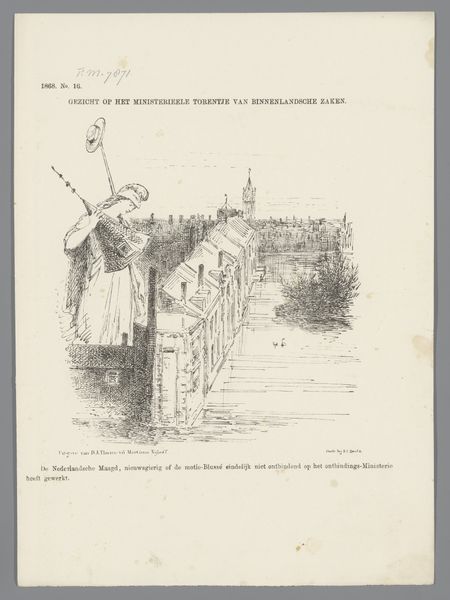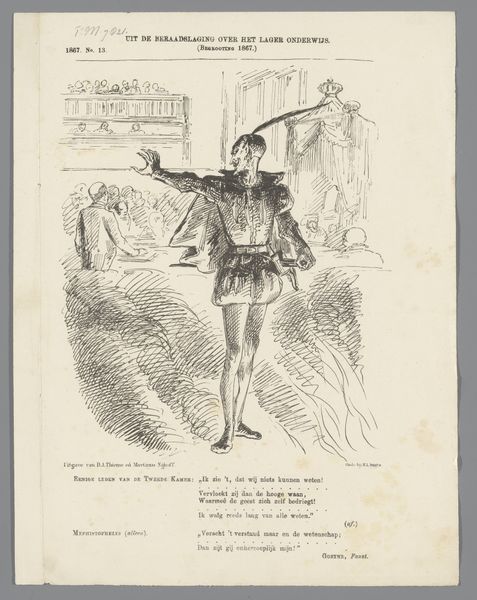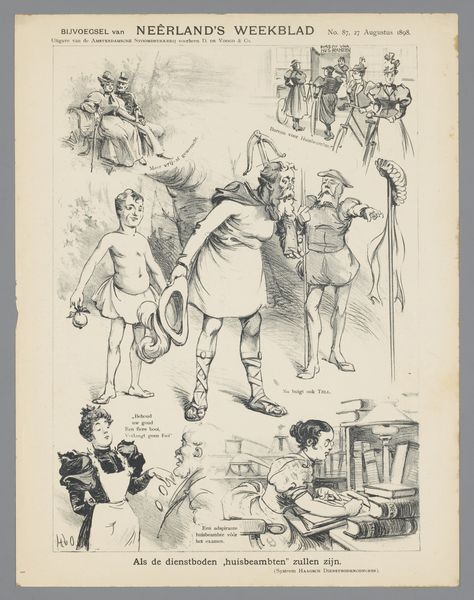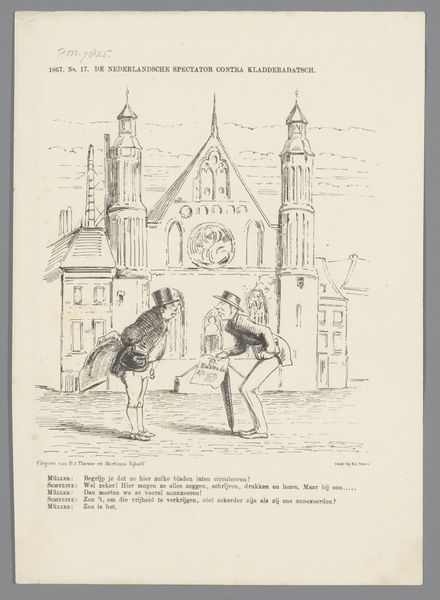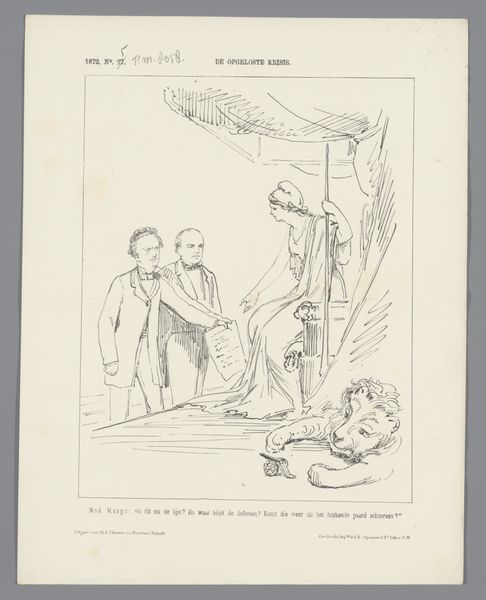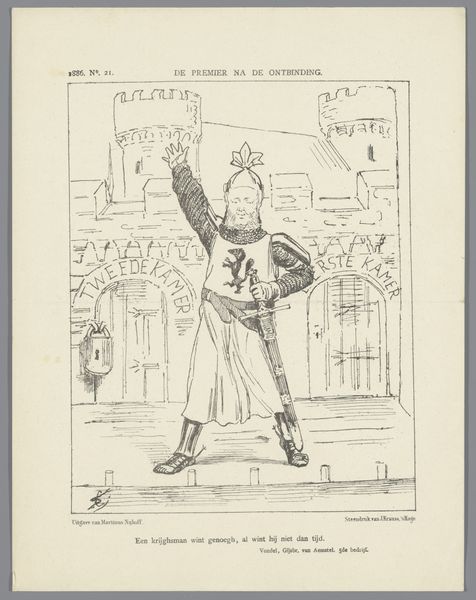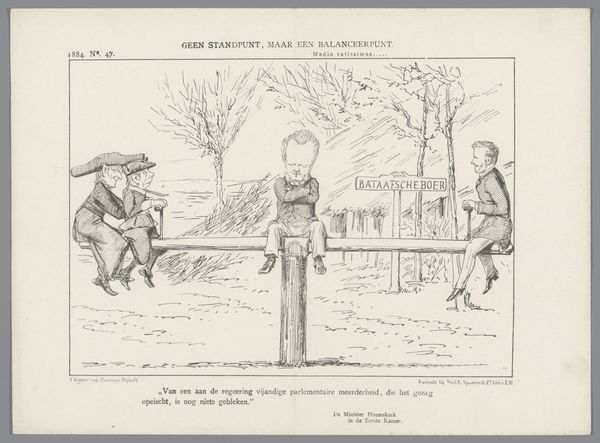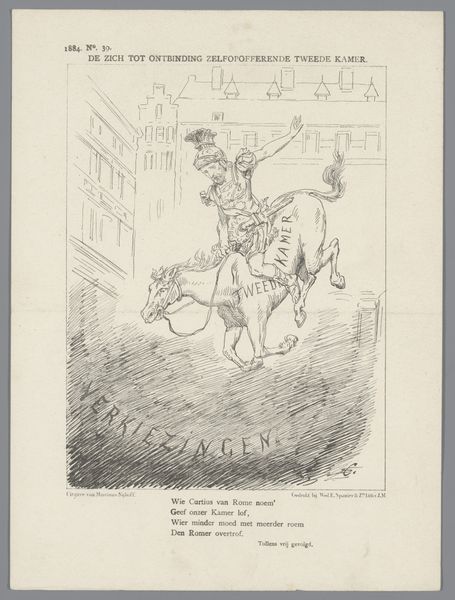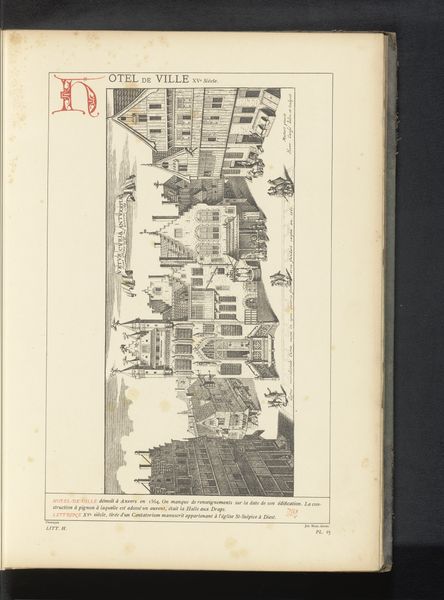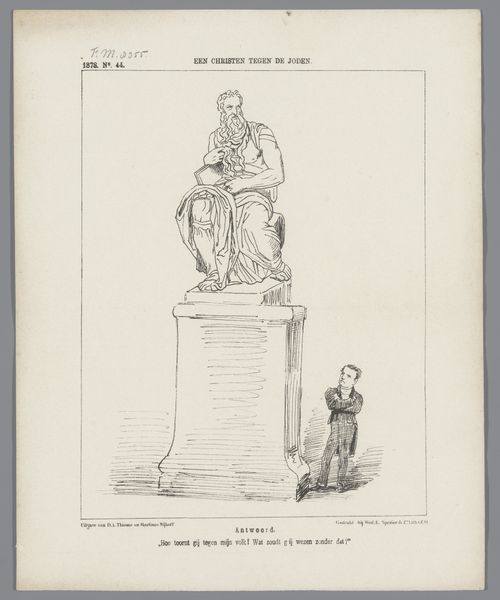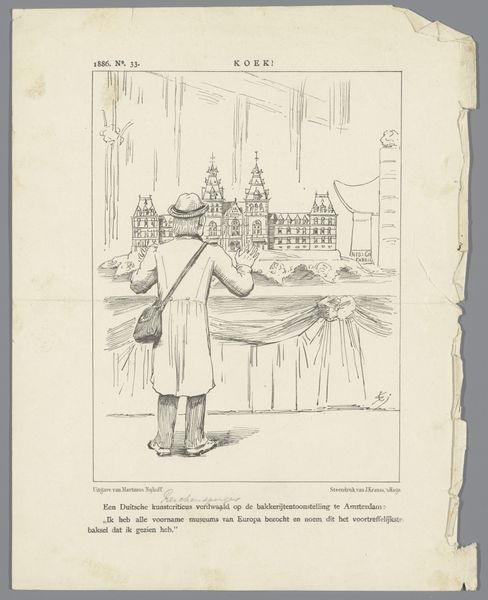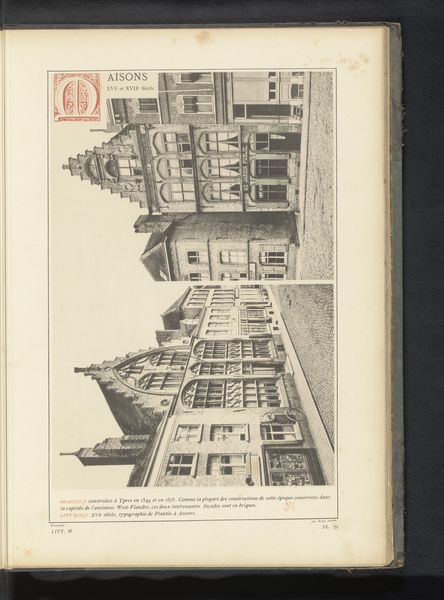
drawing, print, pen
#
drawing
# print
#
caricature
#
pen
#
genre-painting
#
history-painting
Dimensions: height 275 mm, width 215 mm
Copyright: Rijks Museum: Open Domain
Curator: Let's explore this intriguing 1887 print by Johan Michaël Schmidt Crans, titled "Spotprent over het aannemen van de grondwetsherziening, 1887"—a political cartoon regarding the adoption of the constitutional amendment. Editor: It strikes me immediately as sardonic. The scale is odd, and the mood leans heavily into the realm of critique through stark imagery and minimal shading using ink on paper. What exactly is the amendment at issue, and how does that relate to these buildings? Curator: The amendment concerned electoral reform, a heated political issue at the time. The artist employs pen and print to place a caricature of a political figure, likely representing the amended constitution itself, triumphantly atop what appears to be a monument. Editor: Right. Symbols layered deep. Placing that caricature of the constitution on a public monument clearly signifies a pivotal moment of perceived impact on civil society. What is that monument referencing? Is it for someone else important? Curator: It's deliberately ambiguous, I think, prompting the viewer to question the grounds for celebration. Consider how readily printed material made such potent political critique accessible and distributable; it highlights how vital printed material was to fueling political conversations and influencing opinions in late 19th-century Dutch society. Also observe how he references Hogendorp and Thorbecke through written annotations within the composition. Editor: Good point, yes; now it appears we also have divine endorsement by looking upwards: two floating men, either gods or important political or intellectual ancestors are observing this figure's triumph. How fascinating, all this encoded approval or disapproval. What do you think an original audience would have felt upon seeing it displayed publicly? Curator: Knowing the political context is crucial here; this piece probably sparked intense debates on election rights and the roles of figures and ideals depicted within. It provides a window into a time when debates around national identity and governance shaped both social actions and visual imagery. Editor: Absolutely, the visual encoding captures more than facts; the illustration’s lines, layout, and choice of material offer insight into the feelings circulating at that moment. Curator: Looking closer really underscores how material conditions were integral to delivering impactful socio-political narratives at the time. Editor: And examining these combined approaches unlocks fresh angles into a turning point of collective Dutch understanding.
Comments
No comments
Be the first to comment and join the conversation on the ultimate creative platform.
